Xiaoguang Zhou
FireMatch: A Semi-Supervised Video Fire Detection Network Based on Consistency and Distribution Alignment
Nov 09, 2023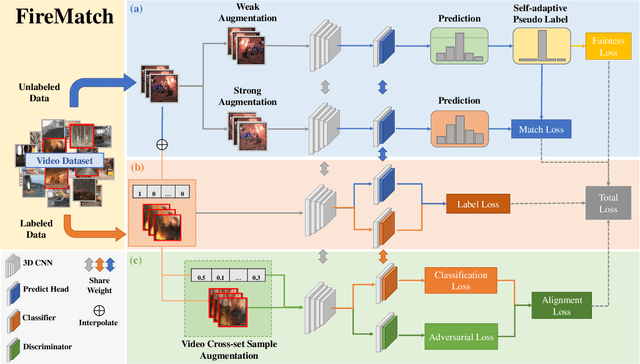
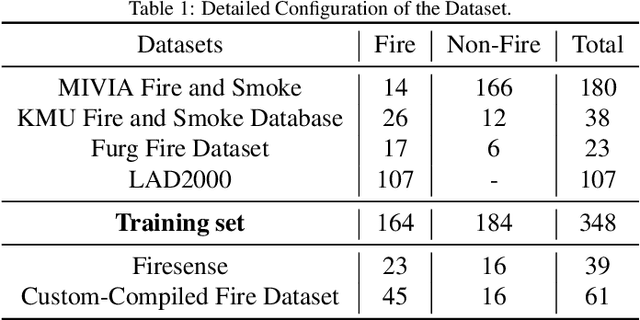
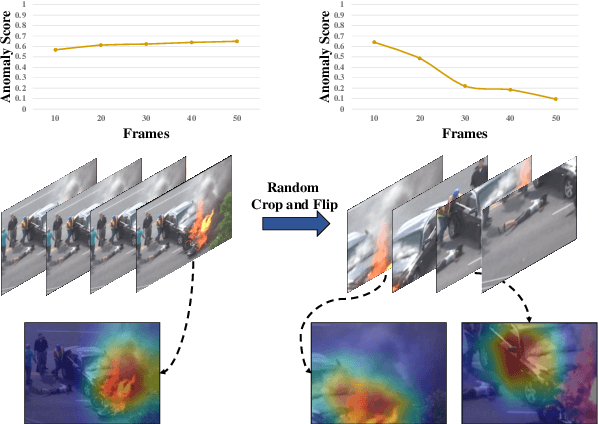

Abstract:Deep learning techniques have greatly enhanced the performance of fire detection in videos. However, video-based fire detection models heavily rely on labeled data, and the process of data labeling is particularly costly and time-consuming, especially when dealing with videos. Considering the limited quantity of labeled video data, we propose a semi-supervised fire detection model called FireMatch, which is based on consistency regularization and adversarial distribution alignment. Specifically, we first combine consistency regularization with pseudo-label. For unlabeled data, we design video data augmentation to obtain corresponding weakly augmented and strongly augmented samples. The proposed model predicts weakly augmented samples and retains pseudo-label above a threshold, while training on strongly augmented samples to predict these pseudo-labels for learning more robust feature representations. Secondly, we generate video cross-set augmented samples by adversarial distribution alignment to expand the training data and alleviate the decline in classification performance caused by insufficient labeled data. Finally, we introduce a fairness loss to help the model produce diverse predictions for input samples, thereby addressing the issue of high confidence with the non-fire class in fire classification scenarios. The FireMatch achieved an accuracy of 76.92% and 91.81% on two real-world fire datasets, respectively. The experimental results demonstrate that the proposed method outperforms the current state-of-the-art semi-supervised classification methods.
SNF: Filter Pruning via Searching the Proper Number of Filters
Dec 14, 2021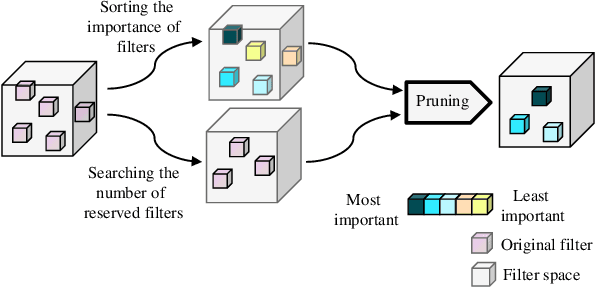
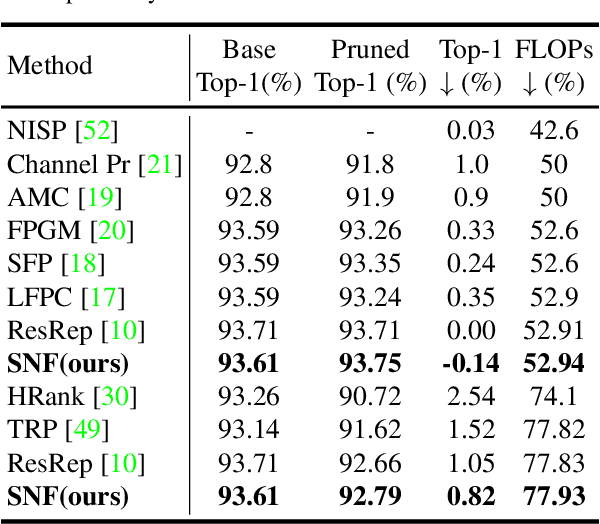
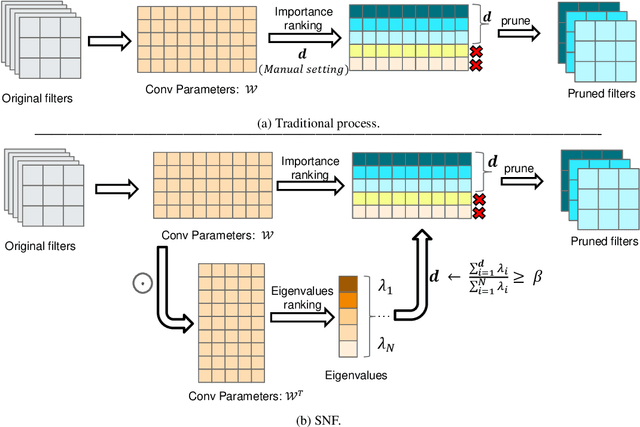
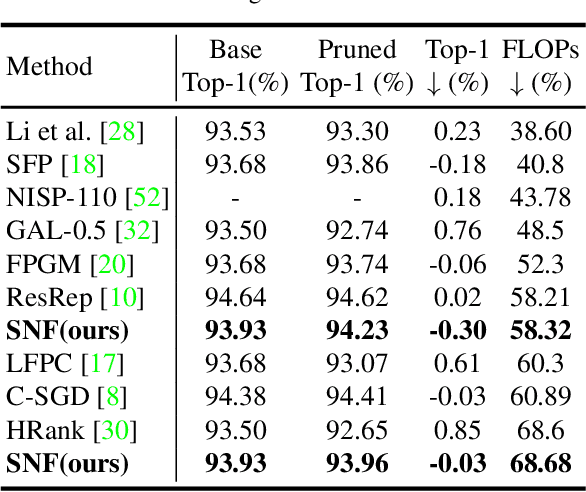
Abstract:Convolutional Neural Network (CNN) has an amount of parameter redundancy, filter pruning aims to remove the redundant filters and provides the possibility for the application of CNN on terminal devices. However, previous works pay more attention to designing evaluation criteria of filter importance and then prune less important filters with a fixed pruning rate or a fixed number to reduce convolutional neural networks' redundancy. It does not consider how many filters to reserve for each layer is the most reasonable choice. From this perspective, we propose a new filter pruning method by searching the proper number of filters (SNF). SNF is dedicated to searching for the most reasonable number of reserved filters for each layer and then pruning filters with specific criteria. It can tailor the most suitable network structure at different FLOPs. Filter pruning with our method leads to the state-of-the-art (SOTA) accuracy on CIFAR-10 and achieves competitive performance on ImageNet ILSVRC-2012.SNF based on the ResNet-56 network achieves an increase of 0.14% in Top-1 accuracy at 52.94% FLOPs reduction on CIFAR-10. Pruning ResNet-110 on CIFAR-10 also improves the Top-1 accuracy of 0.03% when reducing 68.68% FLOPs. For ImageNet, we set the pruning rates as 52.10% FLOPs, and the Top-1 accuracy only has a drop of 0.74%. The codes can be available at https://github.com/pk-l/SNF.
 Add to Chrome
Add to Chrome Add to Firefox
Add to Firefox Add to Edge
Add to Edge